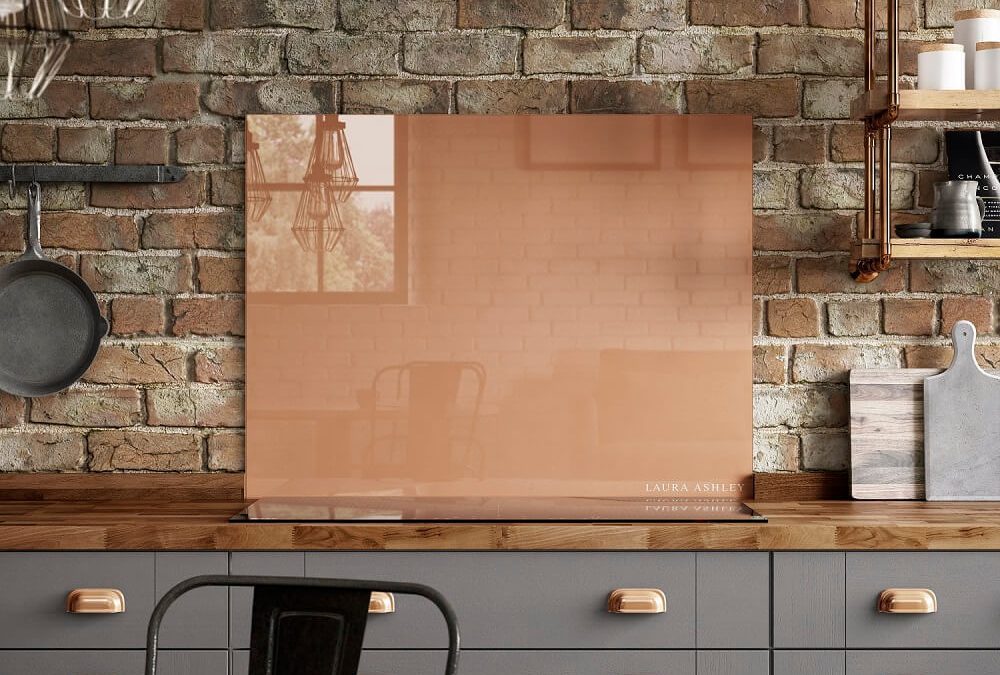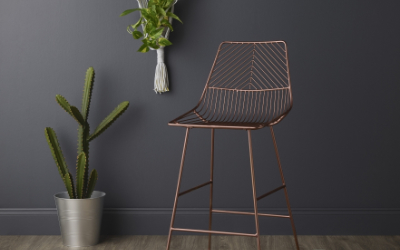When buying wallpaper, make sure each roll has the same batch number.
Make sure that all your walls are clean, dry and free from dirt and cobwebs. If there are any ‘problem areas’ such as damp, make sure that you resolve these problems before putting up the wallpaper.
Remove any nails, hooks or screws with pliers. Fill in any large holes with a filler and sandpaper down the holes before you apply the wallpaper so it does not cause a bump under your strip.
Measure the length of the wall that needs to be papered, then add about 20cm to the measurement (giving leeway at the top and bottom to account for any wonky walls or inaccurate measurements). Unroll your paper on the pasting table, then using a tape measure and a pencil, make a mark on the back of the paper where it needs to be cut. Fold your paper over on itself, making sure it lines up at the edges, and cut away your first strip.
Using your plumb line or app, mark a straight vertical line on the wall. Now you have your first piece cut to size and your plumb line drawn, it’s time to apply it to the wall. The wallpaper rule has always been that you paste the wall and you paste the paper, but I don’t really understand why.* I found that by pasting the paper, it’s a nightmare to transfer it from table to wall -it sticks to you, it sticks to itself. Instead, I just give the wall one generous coating of glue (place a roll against the wall first and mark how far along the wall needs to be pasted), then just paste a small piece of the paper in the top corners so that it is easy to first attach.
Apply your strip to the top of the wall, then gently smooth it down the wall using gentle strokes with your clean cloth. Smooth out from the middle of the paper to the edges. If it is not going on perfectly, don’t worry – breathe – gently peel if off, then apply it again. Remember to use gentle strokes so not to cause creases in the paper. Once you think it is laying nicely, use your cloth to smooth down the edges.
Again using your cloth, push your paper in as far as it will go into the crevice where the paper meets the ceiling and the skirting, creating a faint line which will act as a marking to where you will cut away the excess.
You can either cut freehand along the indented line, or push a ruler in the crevice and cut along that. OR, if you find the cutting knife tricky, pull the paper slightly away from the wall and cut the indented line with a pair of scissors. All three options work fine, but take your time and be patient with this part of wallpapering. There is the real possibility here that you will cut too much paper away (if this happens, scroll down for my quick fix!)
The second strip is harder than the first as you can’t just measure and stick it up, you need to match up the pattern. Depending on the type of wallpaper pattern you have chosen, this may be easy or a bit of a pain. Patterns with a big repeat drop mean you may get a lot of wastage.
Take the roll and slowly unroll it against your first strip until you can see where the pattern meets. if there is going to be alot of excess paper at the top, make a mark so that you can cut away what won’t be needed. Make sure that your second strip accounts for the length of the wall, the excess at the top of the roll, and then also your extra 10cm leeway at the bottom.
When applying this second strip, you are totally focusing on matching up the pattern, plus meeting the edge of the first strip. Don’t let your papers overlap as this will cause a glitch in the pattern and your paper to look ‘raised’ against the wall.
Place your papers edge so it meets the other, then gently slide the paper up and down until the pattern meets up. Once this is complete, gently stroke your paper down, pushing away from the matched edge with your cloth.




0 Comments